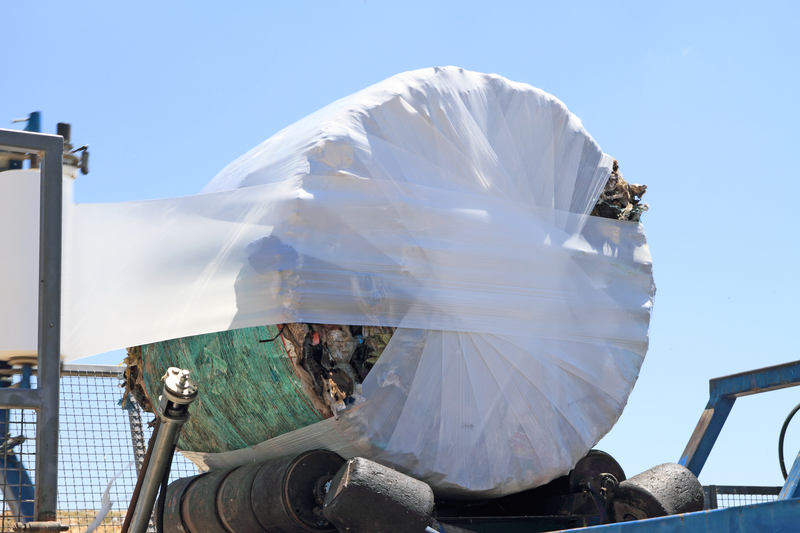Why Responsible PPE Waste Disposal Matters More Than Ever
PPE waste disposal is an issue that has gained remarkable global significance, particularly since the onset of the COVID-19 pandemic. The abrupt and widespread adoption of personal protective equipment (PPE), such as masks, gloves, gowns, and face shields, was essential for safeguarding public health. However, the enormous surge in use has given rise to a pressing environmental challenge: how we manage the disposal of billions of PPE items. Responsible PPE waste disposal is no longer just an operational concern for hospitals or frontline workers--it's a critical component of environmental stewardship that affects every one of us.
The Scale of the Problem: PPE Waste in the Modern World
During the height of the pandemic, it was estimated that over 129 billion masks and 65 billion gloves were used globally every month. While PPE was--and remains--vital in safeguarding lives, its improper disposal can have disastrous consequences for our environment, economy, and public health.
Consider these issues:
- Environmental Pollution: Disposable PPE is predominantly made from single-use plastics that do not biodegrade.
- Threat to Wildlife: Discarded masks and gloves can entangle or be ingested by animals, causing injury or death.
- Human Health Risks: Mismanaged PPE waste can serve as vectors for disease transmission.
The facts are clear: Responsible PPE waste disposal is more important now than ever before.

The Environmental Impact of Improper PPE Waste Disposal
How PPE Waste Contributes to Plastic Pollution
Most PPE is manufactured from materials such as polypropylene and polyethylene--types of plastic that are non-biodegradable. When inadequately disposed of, PPE plastic waste accumulates in landfills, waterways, and even remote natural landscapes. This not only harms our environment but also disrupts crucial ecosystem functions.
- Oceans and Waterways: Researchers have found face masks and gloves in rivers, lakes, and seas around the world. The plastics in PPE break down into microplastics, entering the food chain and threatening marine life.
- Soil Health: Over time, microplastics leach into the soil, altering its composition and potentially affecting food production.
Global Consequences and Lasting Damage
The environmental damage caused by irresponsible PPE waste management extends far beyond our local communities. According to studies, discarded PPE can remain in the environment for hundreds of years. This creates long-term risks for biodiversity, climate change, and even economic stability in regions reliant on clean natural resources.
Public Health and Safety Risks Arising from PPE Waste
Disease Transmission
Improper disposal of contaminated PPE puts sanitation workers, waste handlers, and the public at significant risk. Used masks and gloves can harbor viruses and bacteria, potentially spreading infections beyond the original care setting.
- Landfill and Waste Site Hazards: Inadequate separation of hazardous and non-hazardous waste can lead to cross-contamination.
- Informal Recycling Sector Risks: In many countries, informal waste pickers are exposed daily to contaminated PPE, with little protection or guidance.
Clogging of Urban Drainage Systems
PPE such as masks and gloves can clog sewers and drainage systems, leading to urban flooding and sanitation crises. This not only disrupts city life but also creates further opportunities for disease outbreaks and environmental damage.
The Importance of Responsible PPE Waste Disposal: Key Reasons
Given the scale and the risk, the need for responsible PPE waste disposal has never been so urgent. Here are some compelling reasons why it matters:
- Protects Human Health: Safe disposal of contaminated PPE prevents disease transmission and keeps waste workers, healthcare professionals, and the wider community safe.
- Supports Environmental Sustainability: Responsible PPE waste management minimizes the build-up of plastic pollution and its toxic impact on land and water.
- Keeps Wildlife Safe: Proper PPE waste collection prevents inadvertent harm to wildlife and reduces the risk of animals ingesting or becoming entangled in used PPE.
- Reduces Economic Costs: Improved practices minimize the cost of environmental clean-up, healthcare expenses, and disaster response linked to improper PPE disposal.
- Promotes Social Responsibility: Demonstrates a commitment to global citizenship and sustainable practices, building trust with communities and stakeholders.
Effective Strategies for Responsible PPE Waste Disposal
Meeting the challenge of PPE waste requires an organized, multi-pronged approach. Here are some proven strategies:
1. Segregation at Source
Effective PPE waste disposal begins at the point of use. Healthcare facilities, offices, public spaces, and homes should all segregate PPE waste from regular trash. Special bins, clearly labeled and color-coded, should be provided for easy collection.
2. Proper Packaging and Handling
Used PPE items should be double-bagged and sealed to prevent leaks and exposure during transportation. Waste handlers must wear protective gear and receive training on safe PPE waste management protocols.
3. Safe Transportation and Final Disposal
PPE waste should only be transported by authorized waste management entities who follow strict regulations and guidelines, ensuring that the waste is incinerated or treated to neutralize biohazards.
- Incineration: High-temperature incineration destroys pathogens and reduces waste volume, although it must be done with adequate emission controls.
- Autoclaving: Some PPE can be sterilized using steam-based autoclaving before final disposal or recycling.
4. Exploring Innovative Recycling Solutions
Entrepreneurs and researchers worldwide are developing new methods for recycling used PPE. Technologies such as pyrolysis, which breaks down plastics into reusable fuel, and mechanical shredding for reuse in construction materials, are promising areas for further investment.
5. Public Education and Awareness
Individuals and organizations alike need to be informed about the right ways to dispose of PPE waste. Public awareness campaigns help reinforce safe practices and highlight the risks associated with improper disposal.
Global Challenges and Opportunities
Developing Countries: Barriers to Safe PPE Disposal
While many developed countries have infrastructure for hazardous waste management, low- and middle-income countries often face significant constraints. These include:
- Lack of funding for proper waste management infrastructure
- Limited public awareness of safe PPE disposal practices
- Informal waste management sectors that are difficult to regulate
International cooperation and investment in waste management solutions are crucial for closing these gaps.
Building a Circular Economy for PPE
The future lies in creating a circular economy for PPE--designing products for easier recycling, developing biodegradable alternatives, and incentivizing recovery and reuse systems. Innovation in product materials and recycling technologies will be vital in reducing the environmental footprint of PPE waste.
The Role of Governments, Organizations, and Individuals
Policymaker Action: Laws and Regulations
Governments have a crucial responsibility to set and enforce standards for PPE waste management. This includes:
- Mandating segregation and labeling of medical and hazardous waste
- Setting strict guidelines for transportation and disposal
- Imposing penalties and incentives to drive compliance
Business and Institutional Responsibility
Healthcare providers, manufacturers, schools, and workplaces must adopt stringent PPE waste disposal procedures and invest in staff training. Transparent reporting and sustainability targets can help organizations demonstrate leadership and accountability.
Personal Responsibility and Best Practices
Every individual has a role in minimizing the impact of PPE waste:
- Dispose of single-use masks and gloves in designated collection points
- Never litter PPE items outdoors or in public spaces
- Consider using reusable, washable masks where appropriate
- Participate in community PPE waste collection or clean-up programs

Innovations and the Future of PPE Waste Disposal
Biodegradable PPE: A Game Changer?
Recent efforts have focused on the development of biodegradable masks and gloves made from natural fibers or plant-based plastics. While these products show promise, widespread adoption remains limited by cost, availability, and certification challenges. Nonetheless, investing in biodegradable alternatives may ultimately revolutionize the landscape of PPE waste.
Smart Disposal Systems and Technology
From AI-enabled waste bins that identify and separate PPE, to scalable sterilization and recycling units for hospitals and airports, technology is driving transformation in PPE waste management. Public and private sectors must collaborate to accelerate the deployment and scaling of these solutions worldwide.
Conclusion: Why Responsible PPE Waste Disposal Matters More Than Ever
Responsible PPE waste disposal is a shared imperative with lasting consequences for our health, our environment, and the future of our planet. The challenges are immense, but so are the opportunities to innovate, collaborate, and take meaningful action.
- By prioritizing safe and sustainable PPE waste practices, we support global health and ecological resilience.
- By investing in innovation and education, we foster a culture of responsibility and stewardship.
- By working together, governments, organizations, and individuals can transform the tide of PPE waste and build a cleaner, safer tomorrow.
Now more than ever, responsible PPE waste disposal matters. Let us all play our part in turning the tide and ensuring a healthier, more sustainable world for future generations.